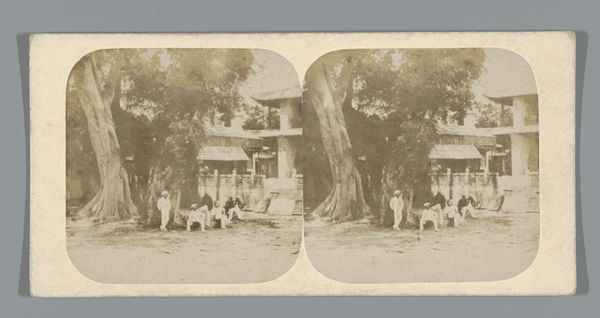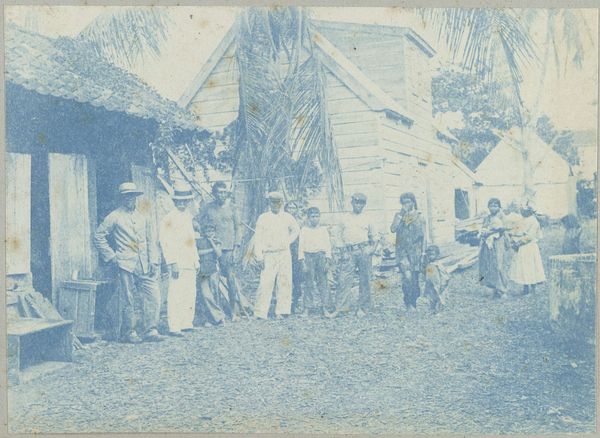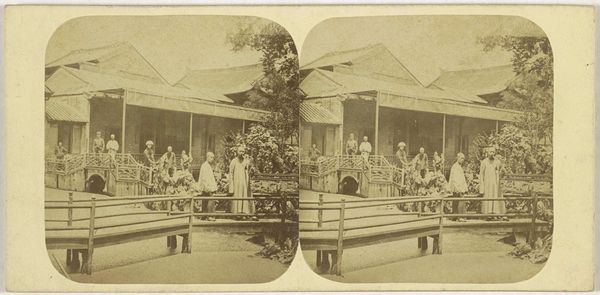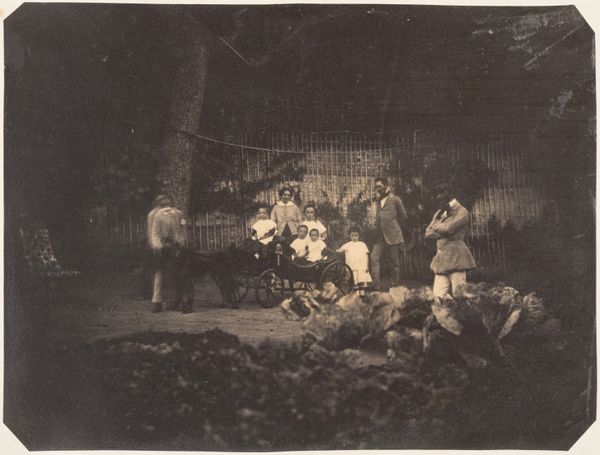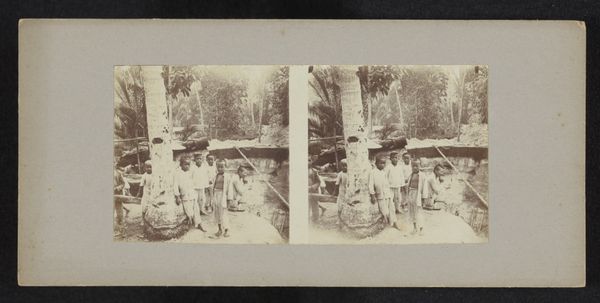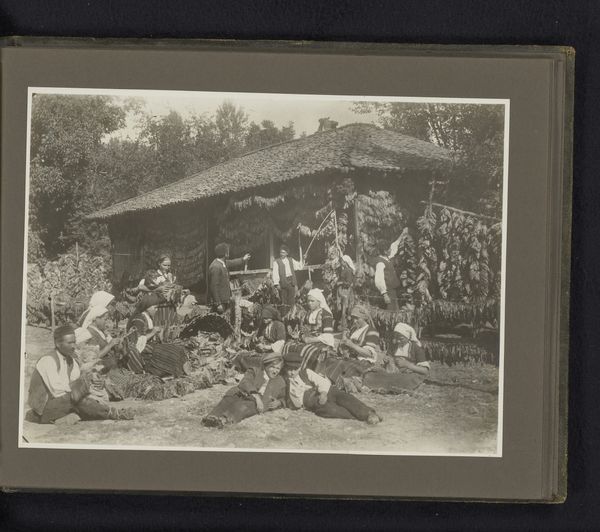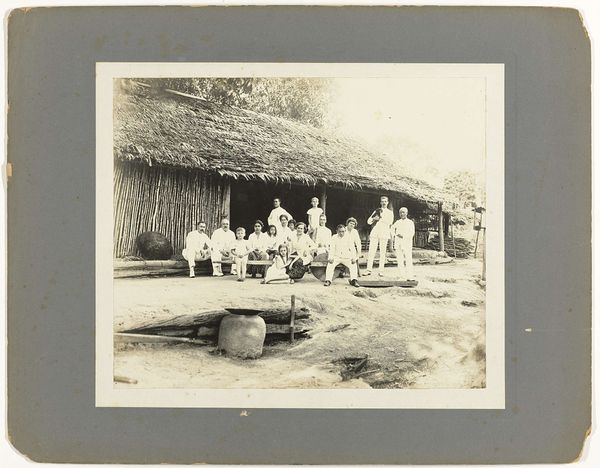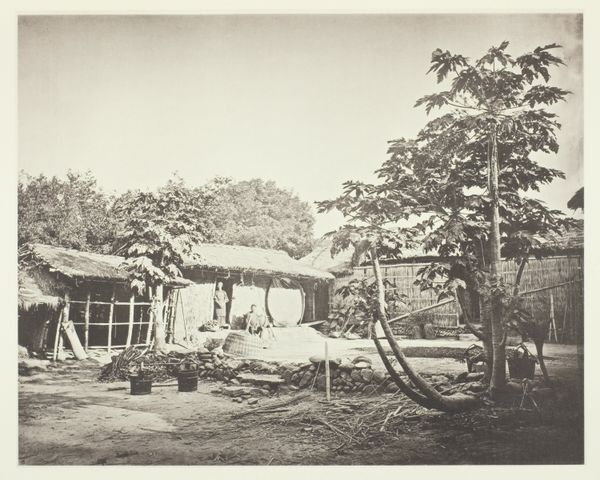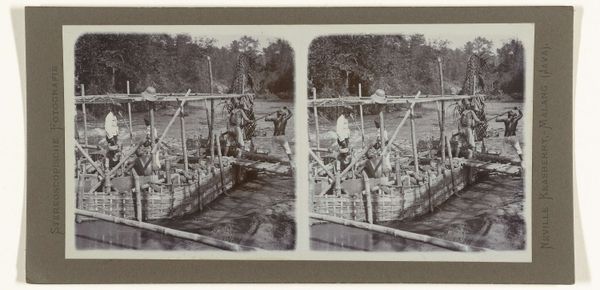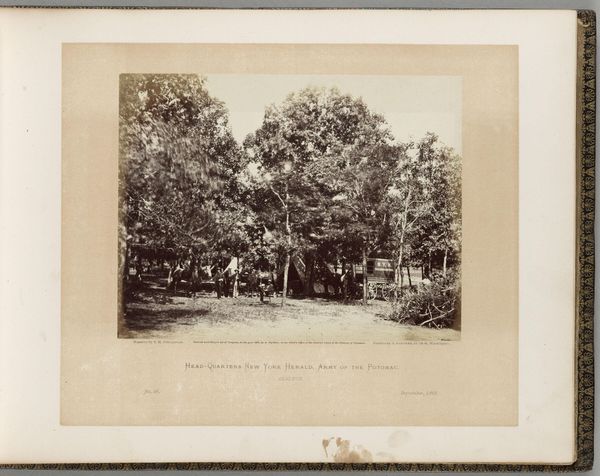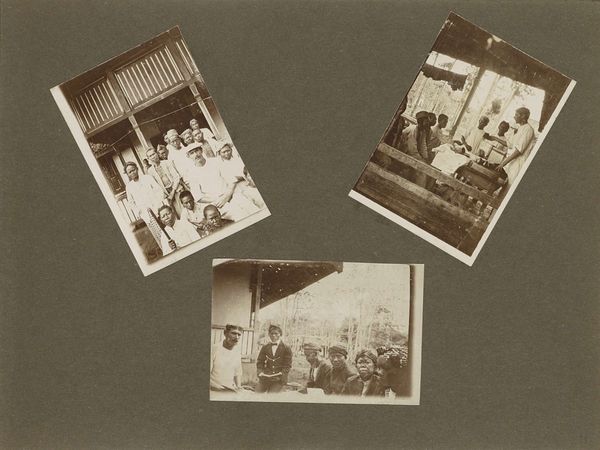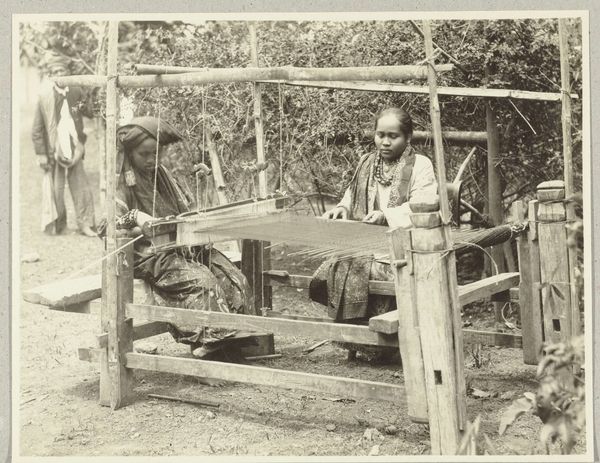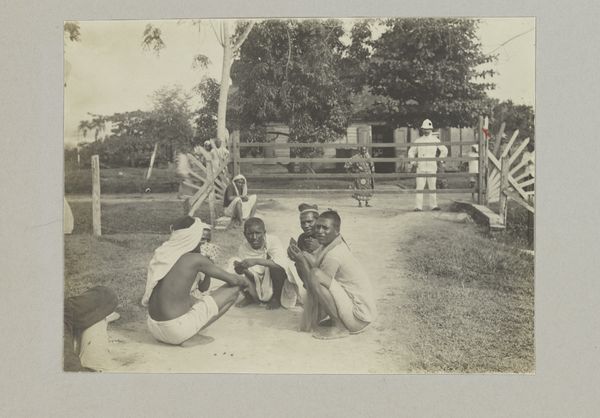
photography, gelatin-silver-print
#
portrait
#
photography
#
gelatin-silver-print
Dimensions: height 122 mm, width 169 mm
Copyright: Rijks Museum: Open Domain
Curator: Hendrik Doijer created this gelatin silver print, titled “Familie in een woning bij Albina, Suriname,” sometime between 1903 and 1910. It presents an intimate look at daily life. Editor: Intimate is one word; the image’s striking quality, for me, is its contrast. The deep shadows beneath the thatched roof, and then, in stark contrast, the open clearing and figures presented in full sunlight. Curator: That contrast draws attention to the careful arrangement of materials. Look at how the rough, natural elements of the shelter are assembled – the way the thatching creates layers, or how the wooden beams intersect. These details speak volumes about the relationship between the family and their environment, hinting at resourcefulness born out of necessity and perhaps local traditions. Editor: Absolutely. Considering the colonial context, the image serves as a visual record. We are peering into a specific social and cultural moment – an Indigenous family’s existence under colonial rule. This isn't simply a neutral portrayal; it inevitably engages with the complex power dynamics between the colonizer and the colonized. Who is controlling the narrative here? Whose gaze are we seeing through? Curator: Doijer’s choice of the gelatin silver process would affect the availability, cost and consistency of the final print. I see a confluence of colonial expansion and a new ability to produce images affordably. What looks ‘real’ is very much the product of particular forces. Editor: Yes, the ‘reality’ constructed here becomes a contested space. The family group looks directly at the camera. This isn’t stolen. The act of being photographed, even in this seemingly candid scene, involves negotiation, complicity, and possibly even resistance. It's an intersection of indigenous life and early twentieth century documentation – ripe with all the sociopolitical implications you might expect. Curator: Thinking of the photographic process is important. This would involve some planning on the artist’s side, including acquiring resources. We are implicated in a complex cycle of production, labor, and cultural representation. Editor: It's a layered document that urges us to examine the intersections of representation, colonialism, and the agency of those being depicted. Curator: By exploring the historical process, we reveal something about the politics embedded in a gelatin print photograph. Editor: Indeed, both aesthetically and politically resonant!
Comments
No comments
Be the first to comment and join the conversation on the ultimate creative platform.

